Related Research Articles
A television broadcaster or television network is a telecommunications network for the distribution of television content, where a central operation provides programming to many television stations, pay television providers or, in the United States, multichannel video programming distributors. Until the mid-1980s, broadcast programming on television in most countries of the world was dominated by a small number of terrestrial networks. Many early television networks such as the BBC, CBC, PBS, PTV, NBC or ABC in the US and in Australia evolved from earlier radio networks.

Very high frequency (VHF) is the ITU designation for the range of radio frequency electromagnetic waves from 30 to 300 megahertz (MHz), with corresponding wavelengths of ten meters to one meter. Frequencies immediately below VHF are denoted high frequency (HF), and the next higher frequencies are known as ultra high frequency (UHF).
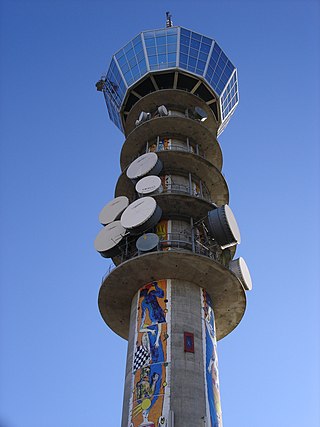
Radio broadcasting is the broadcasting of audio (sound), sometimes with related metadata, by radio waves to radio receivers belonging to a public audience. In terrestrial radio broadcasting the radio waves are broadcast by a land-based radio station, while in satellite radio the radio waves are broadcast by a satellite in Earth orbit. To receive the content the listener must have a broadcast radio receiver (radio). Stations are often affiliated with a radio network that provides content in a common radio format, either in broadcast syndication or simulcast, or both. The encoding of a radio broadcast depends on whether it uses an analog or digital signal. Analog radio broadcasts use one of two types of radio wave modulation: amplitude modulation for AM radio, or frequency modulation for FM radio. Newer, digital radio stations transmit in several different digital audio standards, such as DAB, HD radio, or DRM.
Channel 5 most commonly refers to:
Public broadcasting involves radio, television, and other electronic media outlets whose primary mission is public service. Public broadcasters receive funding from diverse sources including license fees, individual contributions, public financing, and commercial financing, and claim to avoid both political interference and commercial influence.

The FM broadcast band is a range of radio frequencies used for FM broadcasting by radio stations. The range of frequencies used differs between different parts of the world. In Europe and Africa and in Australia and New Zealand, it spans from 87.5 to 108 megahertz (MHz) - also known as VHF Band II - while in the Americas it ranges from 88 to 108 MHz. The FM broadcast band in Japan uses 76 to 95 MHz, and in Brazil, 76 to 108 MHz. The International Radio and Television Organisation (OIRT) band in Eastern Europe is from 65.9 to 74.0 MHz, although these countries now primarily use the 87.5 to 108 MHz band, as in the case of Russia. Some other countries have already discontinued the OIRT band and have changed to the 87.5 to 108 MHz band.

The Hellenic Broadcasting Corporation, commonly shortened to ERT, is the state-owned public radio and television broadcaster of Greece.
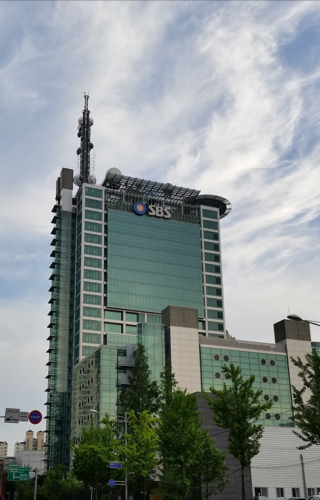
Seoul Broadcasting System (SBS) is one of the leading South Korean television and radio broadcasters. The broadcaster legally became known as SBS in March 2000, changing its corporate name from Seoul Broadcasting System. Its flagship terrestrial television station SBS TV broadcasts as channel 6 for digital and cable.
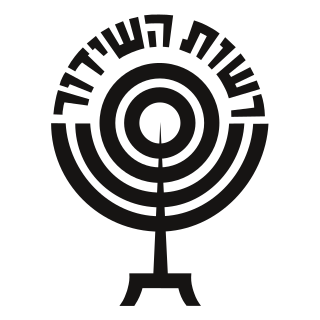
The Israel Broadcasting Authority was Israel's public broadcaster from 1948 to 2017, succeeded by the Israeli Public Broadcasting Corporation.
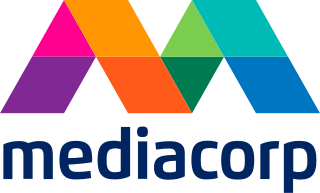
Mediacorp Pte. Ltd. is the state-owned media conglomerate of Singapore. Owned by Temasek Holdings—the investment arm of the Government of Singapore—it owns and operates television channels, radio, and digital media properties. It is headquartered at the Mediapolis development in Queenstown's One-north precinct, which succeeded Caldecott Hill—the long-time home of its predecessors—in 2015; as of 2022, Mediacorp employs over 3,000 employees; a large number of them are in both public and private sector broadcasting.

WNYW is a television station in New York City, serving as the flagship of the Fox network. It is owned and operated by the network's Fox Television Stations division alongside Secaucus, New Jersey–licensed MyNetworkTV flagship WWOR-TV. The two stations share studios at the Fox Television Center on East 67th Street in Manhattan's Lenox Hill neighborhood; WNYW's transmitter is located at One World Trade Center.

MBS Media Holdings, Inc., or MBS, is a radio and television broadcasting media holding company headquartered in Osaka, Japan.
Religious broadcasting, sometimes referred to as faith-based broadcasts, is the dissemination of television and/or radio content that intentionally has religious ideas, religious experience, or religious practice as its core focus. In some countries, religious broadcasting developed primarily within the context of public service provision, whilst in others, it has been driven more by religious organisations themselves. Across Europe and in the US and Canada, religious broadcasting began in the earliest days of radio, usually with the transmission of religious worship, preaching or "talks". Over time, formats evolved to include a broad range of styles and approaches, including radio and television drama, documentary, and chat show formats, as well as more traditional devotional content. Today, many religious organizations record sermons and lectures, and have moved into distributing content on their own web-based IP channels.

Chubu-Nippon Broadcasting Co., Ltd. is a regional radio and television service serving Nagoya, Aichi Prefecture, Japan. It is majorly owned by the Chunichi Shimbun. Its radio service is affiliated with the Japan Radio Network (JRN) and its television service affiliated with the Japan News Network (JNN).
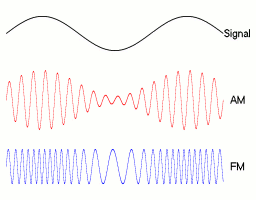
FM broadcasting is a method of radio broadcasting that uses frequency modulation (FM) of the radio broadcast carrier wave. Invented in 1933 by American engineer Edwin Armstrong, wide-band FM is used worldwide to transmit high-fidelity sound over broadcast radio. FM broadcasting offers higher fidelity—more accurate reproduction of the original program sound—than other broadcasting techniques, such as AM broadcasting. It is also less susceptible to common forms of interference, having less static and popping sounds than are often heard on AM. Therefore, FM is used for most broadcasts of music and general audio. FM radio stations use the very high frequency range of radio frequencies.

Munhwa Broadcasting Corporation is one of the leading South Korean television and radio broadcasters. Munhwa is the Sino-Korean word for "culture". Its flagship terrestrial television station MBC TV broadcasts as channel 11.

KVII-TV is a television station in Amarillo, Texas, United States, affiliated with ABC and The CW Plus. Owned by Sinclair Broadcast Group, the station maintains studios at One Broadcast Center between South Pierce and South Buchanan streets in downtown Amarillo, and its transmitter is located west of US 87/287, in unincorporated Potter County.

NHK General TV, abbreviated on-screen as NHK G, is the main television service of NHK, the Japanese public broadcaster. Its programming includes news, drama, quiz/variety shows, music, sports, anime, and specials which compete directly with the output of its commercial counterparts. The channel is well known for its nightly newscasts, regular documentary specials, and popular historical dramas. Among the programs NHK General TV broadcasts are the annual New Year's Eve spectacular Kōhaku Uta Gassen, the year-long Taiga drama, and the daytime Asadora.

TV Asahi Corporation, commonly abbreviated as Tere Asa (テレ朝), with the call sign JOEX-DTV, is a Japanese television station subsidiary of certified broadcasting holding company TV Asahi Holdings Corporation, itself controlled by The Asahi Shimbun Company serving as the flagship station of the All-Nippon News Network. Its studios are located in Roppongi, Minato, Tokyo. TV Asahi is one of the "Big Six" broadcasters based in Tokyo, alongside Nippon Television, TBS, TV Tokyo, NHK General TV, and Fuji Television.

JOOY-DTV, branded as MBS TV or Mainichi Broadcasting System, is a Japanese television station serving as the Kansai region key station of the Japan News Network, owned-and-operated by Mainichi Broadcasting System, Inc. a subsidiary of MBS Media Holdings with its studios being based in the Kita-ku ward of Osaka.